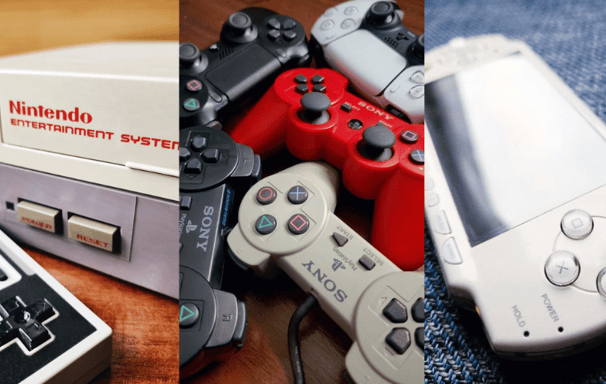Why the 1996 Resident Evil Is a Horror Masterpiece
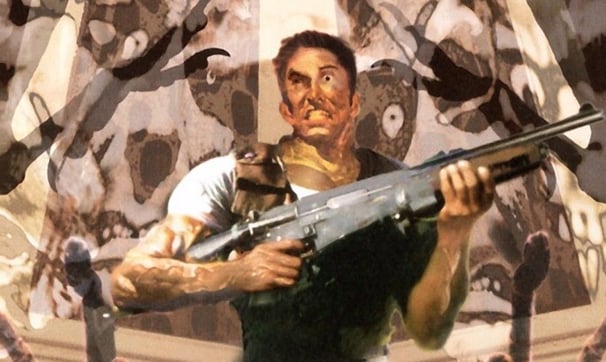

The oldest and strongest emotion of mankind is fear, and the oldest and strongest kind of fear is fear of the unknown.
-H.P. Lovecraft
Gaming in the Late 90s
Before Resident Evil, horror games were more like campfire tales than full-blown nightmares. Titles like Alone in the Dark paved the way, but survival horror was still waiting for a game to pull it from the shadows and throw it screaming into the mainstream. That’s where Resident Evil came in—like a zombie crashing through a window.
In 1996, Capcom released Resident Evil, or Biohazard in Japan, for the PlayStation 1, directed by Shinji Mikami. Inspired by the 1989 horror game Sweet Home and George A. Romero’s zombie films, Mikami and his team wanted to craft a game that wasn't just about shooting monsters but about surviving them. Limited ammunition, creepy mansions, and a story that unfolded like a B-movie made it unlike anything else. It was a nerve-wracking experience that got under your skin—literally, if the zombies had their way.
The game sold over 2.75 million copies worldwide, a staggering figure for its time, proving that horror had a permanent place in gaming.
The Birth of Survival Horror
Resident Evil didn’t invent survival horror, but it did give it a name. The blend of fixed camera angles, limited resources, and puzzle-solving turned every corridor into a life-or-death decision. Do you save your ammo or risk a bite? Do you explore a room or sprint for the nearest typewriter? This tension was the essence of Resident Evil.
Capcom’s use of pre-rendered backgrounds allowed for detailed environments without overwhelming the PS1’s hardware. Combined with haunting sound design, it made players feel like they were exploring a real, rotting mansion. The groans of zombies around every corner were enough to make you reconsider your life choices—or at least your inventory management skills.

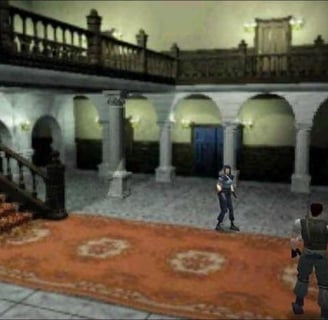
Spencer Mansion Main Hall
The Voice Acting That Was So Bad, It Was Good
We can’t talk about the original Resident Evil without mentioning its hilariously bad voice acting. Lines like “You were almost a Jill sandwich!” have become memes, endearing themselves to fans despite—or perhaps because of—their cheesiness. For all the chills the game delivered, these unintentionally funny moments gave players a chance to breathe.
The Director’s Cut version, released in 1997, promised uncensored content but ended up swapping the soundtrack for one featuring a truly bizarre basement theme. Seriously, look it up—it's nightmare fuel of a different kind.
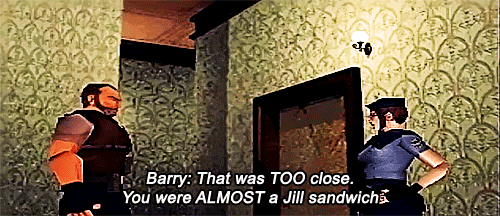

Mastering the Art of Sound Design
If you think the mansion's creaks were unsettling, that was no accident. The sound design in Resident Evil was a masterclass in psychological horror. From footsteps echoing in empty halls to the distant moans of zombies, every sound was crafted to keep players on edge. Even the silence was nerve-wracking, a reminder that anything could be lurking around the corner.
The Best Remake of All Time?
In 2002, Capcom released a remake of the original Resident Evil for the GameCube, transforming the PS1 classic into a true horror masterpiece. With enhanced graphics, updated controls, and new areas, it was more than just a fresh coat of paint. Fans and critics alike hailed it as the best remake ever, a title it arguably still holds.
And because one remake wasn’t enough, Capcom remastered this version again in 2015, bringing it to modern consoles with even sharper visuals and improved controls—proving that you can’t keep a good horror down.
The remake upgraded the visuals, deepened the story, and introduced new mechanics like Crimson Heads—zombies that come back faster and deadlier if you don’t burn them. Talk about raising the stakes.
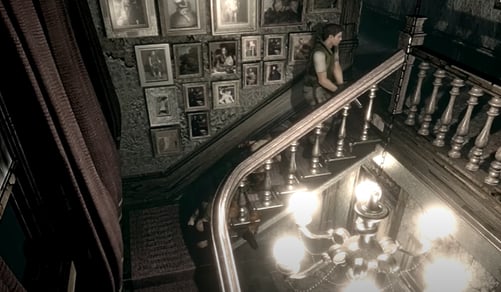

Resident Evil, PlayStation (1996)
Anticipation for Another Remake
With the success of the remakes for Resident Evil 2 and 3, fans are practically foaming at the mouth for a remake of Resident Evil: Code Veronica or even a ground-up reimagining of the original. The anticipation is real, and Capcom knows it. For now, we’ll keep our ink ribbons ready.
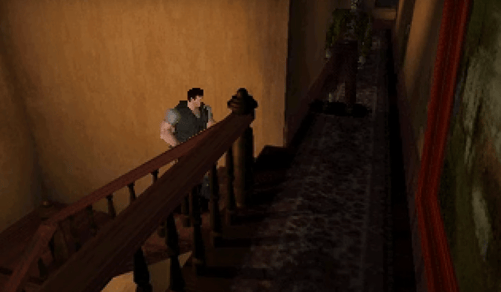

Resident Evil, PlayStation 3 (2015)
The Legacy That Refuses to Die
Resident Evil’s impact on gaming is undeniable. It didn’t just define survival horror—it influenced titles like Silent Hill, Dead Space, and even modern hits like The Last of Us. The series’ blend of horror, puzzle-solving, and limited resources set a blueprint that’s still being followed today.
Whether you’re exploring a mansion or a city overrun with the undead, the sense of dread and isolation that Resident Evil perfected remains unmatched.
After 27 years, countless zombies, and enough jump scares to power a thousand YouTube reaction videos, the Resident Evil franchise is still very much alive—and still finding fresh ways to terrify us.
If you’re a fan of survival horror or just love gaming history, check out more articles on Raised by Retro. Follow us on social media through The Console Quest for the latest updates and nostalgia trips. Who knows, we might even uncover what’s next for the franchise!
Gaming in the Late 90s
Before Resident Evil, horror games were more like campfire tales than full-blown nightmares. Titles like Alone in the Dark paved the way, but survival horror was still waiting for a game to pull it from the shadows and throw it screaming into the mainstream. That’s where Resident Evil came in—like a zombie crashing through a window.
In 1996, Capcom released Resident Evil, or Biohazard in Japan, for the PlayStation 1, directed by Shinji Mikami. Inspired by the 1989 horror game Sweet Home and George A. Romero’s zombie films, Mikami and his team wanted to craft a game that wasn't just about shooting monsters but about surviving them. Limited ammunition, creepy mansions, and a story that unfolded like a B-movie made it unlike anything else. It was a nerve-wracking experience that got under your skin—literally, if the zombies had their way.
The game sold over 2.75 million copies worldwide, a staggering figure for its time, proving that horror had a permanent place in gaming.
The Birth of Survival Horror
Resident Evil didn’t invent survival horror, but it did give it a name. The blend of fixed camera angles, limited resources, and puzzle-solving turned every corridor into a life-or-death decision. Do you save your ammo or risk a bite? Do you explore a room or sprint for the nearest typewriter? This tension was the essence of Resident Evil.
Capcom’s use of pre-rendered backgrounds allowed for detailed environments without overwhelming the PS1’s hardware. Combined with haunting sound design, it made players feel like they were exploring a real, rotting mansion. The groans of zombies around every corner were enough to make you reconsider your life choices—or at least your inventory management skills.
The Voice Acting That Was So Bad, It Was Good
We can’t talk about the original Resident Evil without mentioning its hilariously bad voice acting. Lines like “You were almost a Jill sandwich!” have become memes, endearing themselves to fans despite—or perhaps because of—their cheesiness. For all the chills the game delivered, these unintentionally funny moments gave players a chance to breathe.
The Director’s Cut version, released in 1997, promised uncensored content but ended up swapping the soundtrack for one featuring a truly bizarre basement theme. Seriously, look it up—it's nightmare fuel of a different kind.
Mastering the Art of Sound Design
If you think the mansion's creaks were unsettling, that was no accident. The sound design in Resident Evil was a masterclass in psychological horror. From footsteps echoing in empty halls to the distant moans of zombies, every sound was crafted to keep players on edge. Even the silence was nerve-wracking, a reminder that anything could be lurking around the corner.
The Best Remake of All Time?
In 2002, Capcom released a remake of the original Resident Evil for the GameCube, transforming the PS1 classic into a true horror masterpiece. With enhanced graphics, updated controls, and new areas, it was more than just a fresh coat of paint. Fans and critics alike hailed it as the best remake ever, a title it arguably still holds.
And because one remake wasn’t enough, Capcom remastered this version again in 2015, bringing it to modern consoles with even sharper visuals and improved controls—proving that you can’t keep a good horror down.
The remake upgraded the visuals, deepened the story, and introduced new mechanics like Crimson Heads—zombies that come back faster and deadlier if you don’t burn them. Talk about raising the stakes.
Anticipation for Another Remake
With the success of the remakes for Resident Evil 2 and 3, fans are practically foaming at the mouth for a remake of Resident Evil: Code Veronica or even a ground-up reimagining of the original. The anticipation is real, and Capcom knows it. For now, we’ll keep our ink ribbons ready.
The Legacy That Refuses to Die
Resident Evil’s impact on gaming is undeniable. It didn’t just define survival horror—it influenced titles like Silent Hill, Dead Space, and even modern hits like The Last of Us. The series’ blend of horror, puzzle-solving, and limited resources set a blueprint that’s still being followed today.
Whether you’re exploring a mansion or a city overrun with the undead, the sense of dread and isolation that Resident Evil perfected remains unmatched.
After 27 years, countless zombies, and enough jump scares to power a thousand YouTube reaction videos, the Resident Evil franchise is still very much alive—and still finding fresh ways to terrify us.
If you’re a fan of survival horror or just love gaming history, check out more articles on Raised by Retro. Follow us on social media through The Console Quest for the latest updates and nostalgia trips. Who knows, we might even uncover what’s next for the franchise!








Spencer Mansion Main Hall
Resident Evil, PlayStation (1996)
Resident Evil, PlayStation 3 (2015)
Related Stories
Join our retro gaming community and get weekly updates, deep dives, and hidden gems—straight to your inbox!
